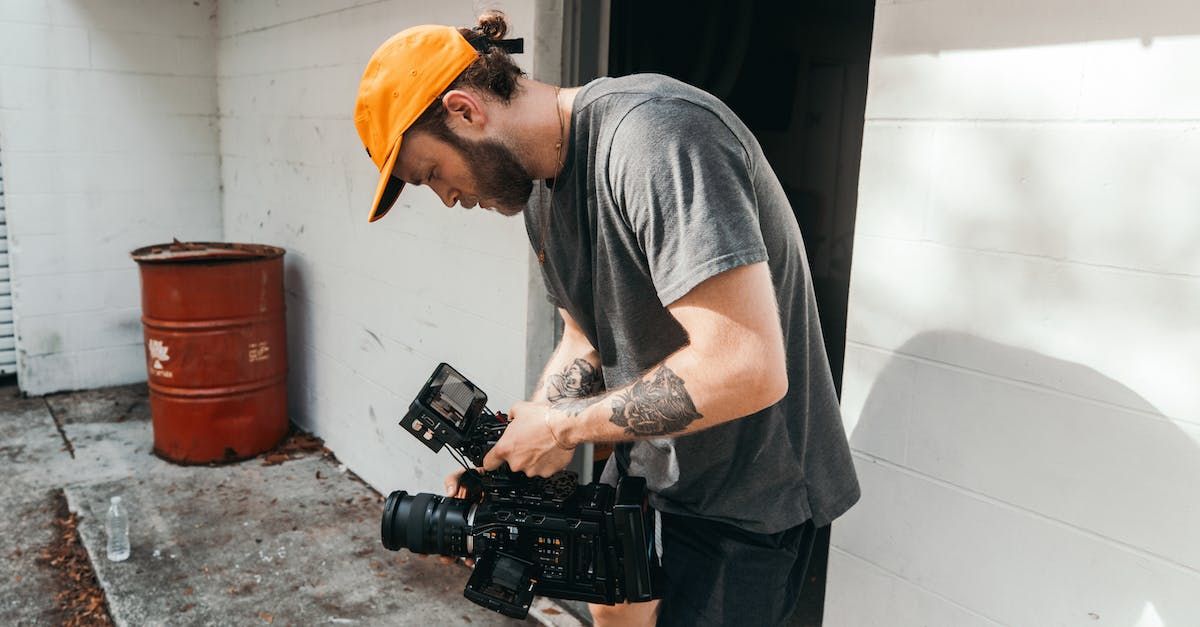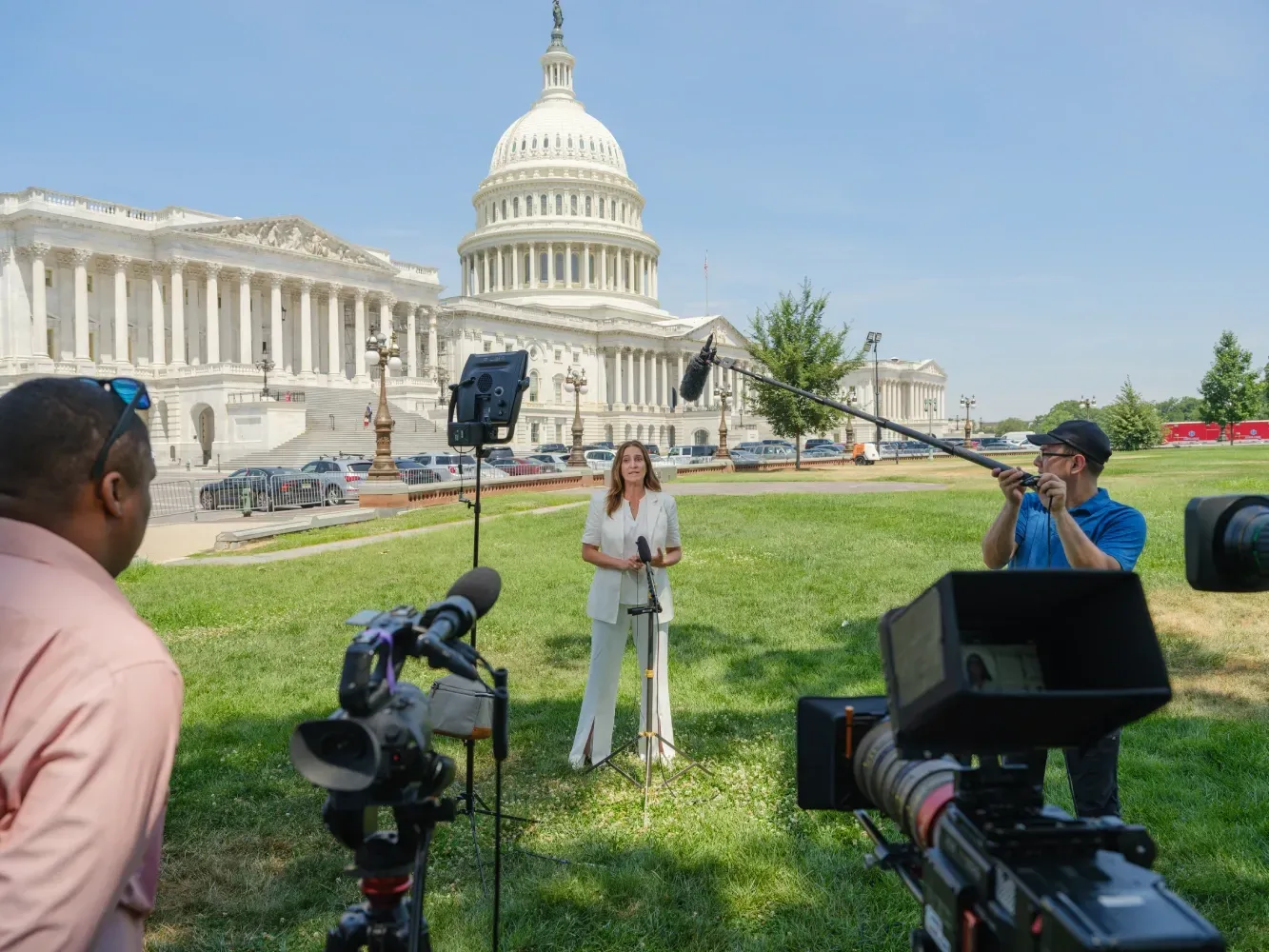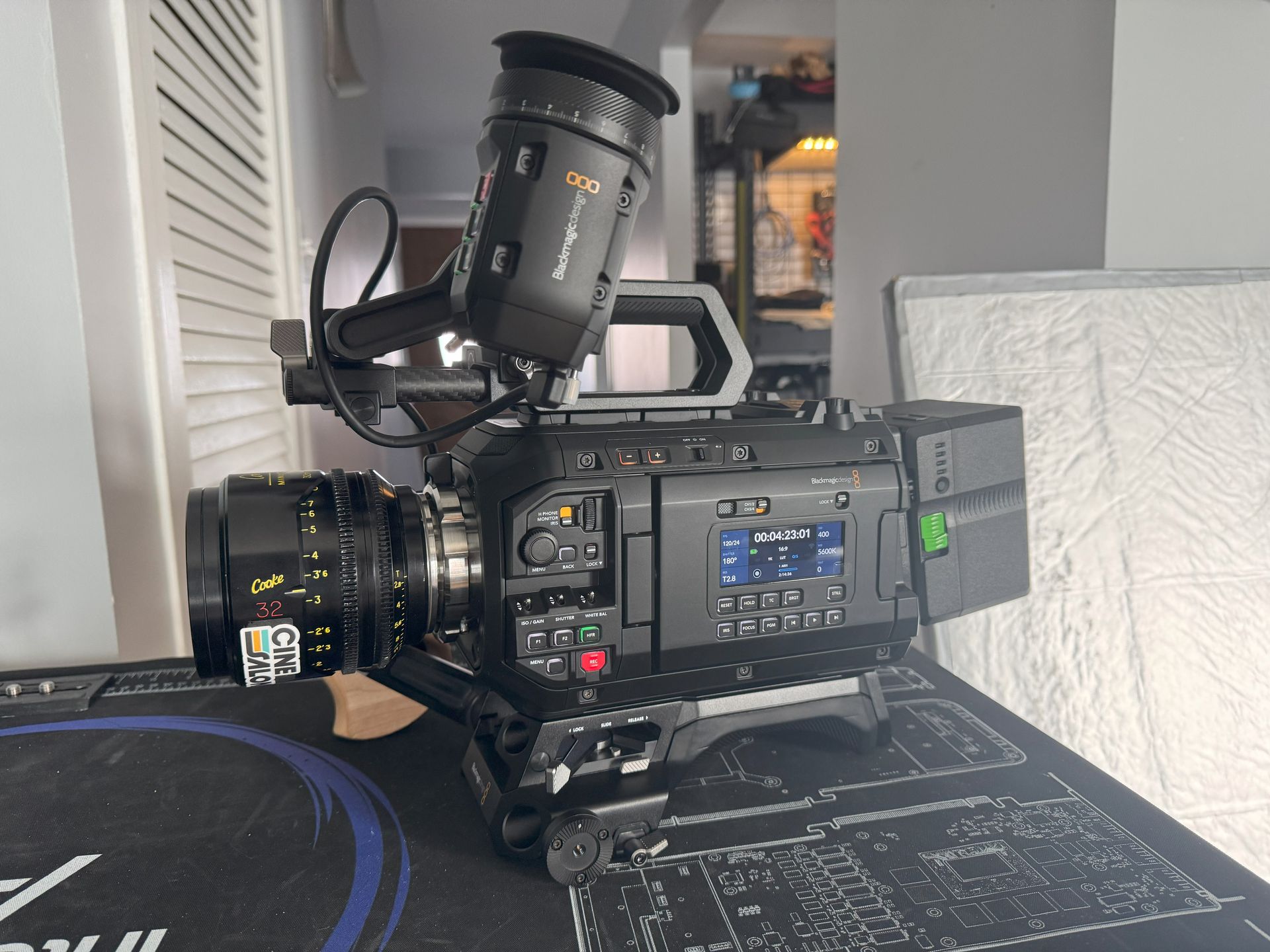
In today's digital landscape, nothing resonates quite like video. It captivates. It influences. It tells a story like no other medium can. But it's not just about creating video content. It's about creating video content that achieves results. This requires a strategic approach and a deep understanding of the elements that make a video creative.
Why is Video So Significant?
The video has a unique power to engage. Combining visuals, sound, and narrative offers a multi-sensory experience that's hard to beat. It's why platforms like YouTube and TikTok are soaring in popularity. And it's why businesses across all sectors make video a cornerstone of their marketing efforts.
Statistics back up the importance of video. According to a survey by Wyzowl, 86% of businesses use video as a marketing tool. Moreover, Cisco forecasts that by 2024, online videos will make up more than 82% of all consumer internet traffic.
These figures point to a world deeply immersed in video content. For businesses, this presents an unprecedented opportunity to connect with their audience. However, not just any video will do. The content must be creative, compelling, and aligned with the brand's message.
The Role of Creative in Video
Creativity isn't merely an element of video; it's the soul. It dictates how a story is told, the emotions evoked, and the video's impact on its viewers. A well-crafted video creative can persuade, inspire, educate, and entertain - all while driving the viewer to take a desired action.
In marketing, creativity can distinguish between a video that sinks without a trace and one that becomes a viral sensation. This is why creating video creative that gets results isn't a nice-to-have skill; it's essential for businesses looking to thrive in the digital age.
The journey to creating video creative that works starts here. This guide will walk you through the process, from understanding the basics of video creation to mastering the art of storytelling and technical aspects of video production.
Understanding the Basics
Unveiling Video Creative
At its core, video creation is the fusion of artistry and strategy. It involves weaving together visual, audio, and narrative elements to craft a video that entertains and fulfills a strategic purpose. This could raise brand awareness, promote a product, educate customers, or drive a specific call to action.
A great video creative captures the viewer's attention, holds it, and provokes a desired response. It should tell a compelling story, stir emotions, and reflect the brand's identity and values. It embodies the phrase, "Show, don't tell," allowing viewers to see and feel the message rather than just hearing it.
The Role of Video Creative in Business
Video creativity plays a crucial role in business marketing. It has the potential to bring your brand to life, engage customers, and drive conversions. Its effectiveness is proven, with studies showing that video content can improve understanding of a product or service by 74%. Furthermore, a report by HubSpot reveals that 54% of consumers want to see more video content from a brand or business they support.
These figures suggest that good video creativity isn't just an advantage; it's a necessity. It can propel your brand forward in a crowded market, helping to attract, engage, and retain customers.
Learning from Success Stories
Some businesses have successfully harnessed the power of video creativity to impressive effect. Let's take the example of Dollar Shave Club. Their humorous and quirky introductory video, which cost just $4,500, catapulted the brand into the limelight, earning 12,000 new subscribers in the first 48 hours.
Another example is Always' #LikeAGirl campaign. The inspiring video confronted gender stereotypes, sparking a worldwide conversation and gaining over 90 million views.
The takeaway here is clear: compelling video creative can yield astounding results. It can elevate a brand, generate buzz, and drive substantial engagement. So how can you create such persuasive video content? The answer lies in strategic planning, a deep understanding of your audience, and a dash of creativity. In the following sections, we will detail each of these areas.

Pre-Production Planning
The Importance of Goals
Any successful venture begins with a clear goal. Video creation is no exception. Before shooting a single frame, you need to understand your objectives. Do you aim to increase brand awareness? Is your intent to introduce a new product? Or perhaps you want to foster deeper customer engagement. By defining your goals upfront, you can shape your video creative to fulfill them.
Identifying Your Target Audience
Knowing your audience is as crucial as knowing your goals. Who are you making this video for? What are their interests, needs, or pain points? Understanding your target demographic allows you to craft a video that speaks directly to them. It ensures your content is relevant, engaging, and, most importantly, effective.
Conducting Market Research
Market research is critical to understanding your competition and industry trends. Look at what your competitors are doing. What kind of video content do they produce? How does their audience respond? Also, keep an eye on popular video trends in your industry. Gleaning insights from these can give you a competitive edge and inspire fresh ideas for your content.
Storyboarding and Scripting
Storyboarding is the visual representation of your video, while scripting is the written version of the dialogue. Both are essential pre-production steps. A storyboard guides the optical flow of your video, providing a rough sketch of each scene. It helps you visualize your concept, ensuring it works before filming.
The script, on the other hand, maps out the spoken content. It sets the tone, pace, and direction of the narrative. A well-crafted script ensures your message is clear, concise, and compelling.
Crafting Your Video Creative
Pre-production planning may not be the most glamorous part of video creation, but it is foundational. By defining clear goals, identifying your audience, conducting market research, and carefully crafting your storyboard and script, you lay the groundwork for a successful video creative. This careful planning will guide your production and post-production stages, leading to a video that looks great and achieves its intended results.
Remember, practical video creativity is a blend of strategy and creativity. It involves careful planning, a deep understanding of your audience, and a dose of imagination. It's not always easy, but the payoff can be significant when done right.
IV. Creating a Compelling Narrative
Storytelling: The Heart of Video
Stories captivate us. They move, inspire, and stay with us long after the telling. For your video to resonate, it must tell a compelling story. Not just a run-of-the-mill story but one that grabs attention, tugs at emotions, and leaves a lasting impact. This is the power of narrative in video creation.
Building a Compelling Narrative
Creating a compelling narrative isn't about complex plots or dramatic twists. It's about connecting with your audience on a human level. Here's how you can do it.
First, start with a clear message. What do you want your audience to remember after watching your video? Distill this into a single, clear message.
Next, build your story around this message. Every level has a beginning, middle, and end. The opening sets the scene and hooks the viewer. The center builds tension or explores the main idea. The ending delivers a satisfying conclusion and a clear call to action.
Remember, your story should evoke emotion. Feelings make a story memorable whether it's joy, sadness, surprise, or anticipatioonable. It's what compels the viewer to act.
Aligning the Narrative with Brand Identity
Your video is a reflection of your brand. It should embody your brand's values, personality, and ethos. This is where brand storytelling comes in.
Brand storytelling is about weaving your brand's narrative into the larger story. It's about making your brand an integral part of the plot. This enhances your brand's visibility and fosters a deeper connection with the audience.
To effectively integrate your brand into the story, think about what your brand stands for. What are its unique qualities? How does it make a difference in people's lives? These elements should subtly weave into the narrative, creating an engaging and authentic story to your brand.
The Art of Narrative Video Creation
Creating a compelling narrative for your video may seem challenging. But you can craft a story that resonates with clear messaging, emotional engagement, and thoughtful brand integration.
Remember, the power of video lies not just in showing but in telling. It's about capturing the viewer's imagination, stirring their emotions, and leading them to meaningful action. And at the heart of it, all is the narrative.
Master the art of storytelling in video creative, and you hold the key to creating videos that don't just attract views but also drive results.

Visual Aspects of Video Creation
The Role of Visual Aesthetics
Visuals are the lifeblood of video content. They draw the eye, set the mood, and create a lasting impression. A well-shot, aesthetically pleasing video can captivate viewers and make your brand stand out. But achieving this requires more than just a good camera. It demands a keen eye for design and a deep understanding of visual principles.
Design Principles in Video
Good design in video hinges on a few fundamental principles. One is balance. A balanced composition is visually pleasing whether it's color, shape, or movement. It guides the viewer's eye and brings harmony to the frame.
Contrast is another principle. You can create visual interest and highlight key points by using opposing elements, such as light and dark or large and small.
Lastly, there's emphasis. This involves using design elements to draw attention to a particular frame part. It helps guide the viewer's focus and underscores the critical message.
Creating Visually Appealing Videos
Creating visually appealing videos starts with careful planning. This includes selecting suitable locations, props, and color palettes. It also involves considering lighting and camera angles.
When shooting, pay attention to the rule of thirds. This principle suggests dividing your frame into thirds, both horizontally and vertically. The points where these lines intersect are the optimal spots for your subjects.
Remember to keep your visuals varied. Use a mix of wide, medium, and close-up shots to keep the viewer engaged. Also, consider how motion can add dynamism to your video. This could be movement within the frame or movement of the camera itself.
Visuals: More than Meets the Eye
Visuals in video creation are more than just pretty pictures. They're a powerful storytelling tool. They set the scene, evoke emotion, and convey your brand's aesthetic.
By mastering visual principles and techniques, you can create visually striking videos and effectively deliver your message. With the right visuals, your video can captivate viewers, strengthen your brand identity, and drive results.
The Role of Sound in Video Creation
Significance of Sound Design
Sound is an integral part of video creation. It brings life to visuals, creates an emotional atmosphere, and aids storytelling. Sound design can make or break your video content, whether it's an upbeat music track, a compelling voiceover, or subtle sound effects.
Crafting an Effective Soundtrack
A soundtrack sets the mood of your video. It should complement the visuals and narrative, enhancing the overall feel of your content. For example, an upbeat track can make a fun product reveal lively, while a soft melody can underscore an emotional message.
Consider your brand's persona and the video's objective when choosing music. Be mindful of copyright laws, and always obtain the necessary permissions or licenses. Remember, a good soundtrack aligns with your brand's identity, fits the video's context, and evokes the desired emotional response.
The Power of Voiceovers
Voiceovers add a human touch to your video. They narrate the story, explain complex ideas, and guide the viewer through the content. A well-delivered voiceover can enhance viewer comprehension, make your content more relatable, and reinforce your brand's tone.
When creating a voiceover, consider your target audience. The speaker's accent, language, and tone should resonate with your viewers. The voiceover script should be clear, engaging, and concise. And remember quality matters. Use a good microphone and recording setup to ensure clear, professional sound.
Sounds Good to Me
A sound design might seem like a small part of video creation, but its impact is significant. It enhances the viewer's experience, deepens emotional engagement, and aids in delivering your message. You can create a video that sounds as good as it looks by giving due attention to the soundtrack and voiceovers.
Ending with a Strong Call to Action
The Importance of a Call to Action
A call to action (CTA) is the grand finale of your video creative. It's the prompt that nudges viewers to take the next step. Be it making a purchase, signing up for a newsletter, sharing your video, or visiting your website, a CTA guides viewers toward the action you want them to take. Without it, even the most compelling video might not yield the desired results.
Crafting a Powerful CTA
Creating a compelling CTA involves more than tacking on a generic "Buy Now" at the end of your video. It should be clear, compelling, and aligned with your video content.
Firstly, make sure your CTA is clear and specific. Vagueness won't do. Say so if you want viewers to check out your new product line. Tell them directly if you want them to sign up for a webinar.
Secondly, your CTA should inspire action. Use persuasive language and convey the benefits of following through. For instance, instead of saying, "Visit our website," you could say, "Visit our website to get your free ebook."
Lastly, your CTA should seamlessly integrate with your video. It should feel like a natural conclusion, not an abrupt or forced add-on. A strong CTA is the culmination of your narrative and the bridge between viewer engagement and customer action.
CTA Placement and Timing
Where and when you place your CTA matters. While putting the CTA at the end of the video is common, you could introduce it earlier or multiple times, depending on your video's length and structure.
Consider your audience's viewing habits. An end CTA may work if they will likely watch the entire video. If not, you might want to introduce it earlier. Experiment and use analytics to find the best strategy for your audience.
Call to Action: The Final Push
Creating video creative that gets results requires more than just engaging content. It requires a solid call to action. By crafting a clear, compelling, and well-placed CTA, you can motivate viewers to take the desired action, turning engagement into tangible results.
Measuring Video Success
Why Measure Video Performance?
You've created a compelling video. You've followed the steps from planning to crafting a strong CTA. But how do you know it's working? That's where performance measurement comes in. By tracking key metrics, you can assess the impact of your video and make data-driven improvements.
Critical Metrics for Video Performance
Several metrics can help gauge video success. Here are a few crucial ones.
- View count: This is the most basic metric. It tells you how many people have seen your video. However, quantity doesn't always mean quality. That's why other metrics matter, too.
- Engagement: This includes likes, shares, comments, and other interactions. High concentration typically indicates that your video is resonating with viewers.
- Watch time: How long do viewers watch your video? If they drop off early, your content may not be engaging enough.
- Click-through rate (CTR) measures how many viewers clicked on your CTA. A high CTR suggests your video and CTA are compelling.
- Conversion rate: This is the ultimate measure of video success. How many viewers took the desired action? The higher the conversion rate, the more effective your video.
Using Analytics Tools
Various platforms offer tools for video analytics. YouTube Analytics, Facebook Insights, and Google Analytics are examples. These tools provide detailed data on your video's performance. Use them to monitor your metrics and uncover insights about your audience's viewing behavior.
Adjusting Based on Performance
Measuring video success isn't just about gathering data. It's about using that data to improve. If a video isn't performing well, don't be afraid to tweak it. Adjust the script, change the visuals, or experiment with a different CTA. Video creation is iterative, and ongoing optimization is critical to success.
Success in Sight
Measuring the success of your video creative is vital. It helps you understand what's working and what's not. By keeping an eye on critical metrics and making data-driven decisions, you can optimize your videos for better results.
And remember, successful video creative isn't just about views or likes. It's about creating engaging content that resonates with your audience and drives them to action. Keep this in mind as you embark on your video creation journey.
Creating a Compelling Narrative
Storytelling: The Essence of Video
Stories inspire us. They grip us, stir us, and remain in our memories. For your video to captivate, it needs to tell a powerful story. But not just any level. It should grab the audience's attention, tug at their emotions, and create a lingering impact. This is the magic of narrative in video creation.
Constructing a Compelling Narrative
Building a compelling narrative isn't about intricate plots or surprise twists. It's about forming a connection with your audience on a personal level. Here's how you can accomplish this.
Firstly, you need to identify a clear message. What do you want your audience to remember after watching your video? Distill this into a single, concise statement.
Then, construct your story around this message. Each story has a beginning, middle, and end. The beginning should set the scene and captivate the viewer. The middle builds up tension or explores the central idea. The end should deliver a satisfying conclusion and a distinct call to action.
Remember, your story should invoke emotion. Emotions make a story unforgettable whether it's joy, sadness, surprise, or anticipation. It's what compels the viewer to take action.
Matching the Narrative with Brand Identity
Your video represents your brand. It should embody your brand's values, personality, and ethos. This is the role of brand storytelling.
Brand storytelling involves incorporating your brand's narrative into the larger story. It's about making your brand an essential part of the storyline. This increases your brand's visibility and fosters a deeper connection with the audience.
Consider your brand's unique qualities to seamlessly incorporate your brand into the story. How does it stand out? How does it positively affect people's lives? These elements should subtly integrate into the narrative, forming a story that's both engaging and authentic to your brand.
Mastering the Craft of Narrative Video Creation
Creating a compelling narrative for your video might appear daunting. But with precise messaging, emotional engagement, and strategic brand integration, you can craft a story that resonates with your audience.
Bear in mind that video's power lies not just in showing but also in telling. It's about capturing the viewer's imagination, stirring their emotions, and leading them toward meaningful action. At its core is the narrative.
Master storytelling in video creative, and you possess the key to creating videos that don't just attract views but drive results.

The Power of Visuals in Video Creative
Visuals: More Than Just Images
Visuals are the cornerstone of video creation. They catch the viewer's eye, set the tone, and communicate your message. But quality visuals go beyond beautiful images. They require an understanding of design principles and an eye for detail.
Designing Effective Visuals
Effective visual design rests on a few key pillars. Balance is one of them. A balanced composition, whether in color, shape, or motion, is visually appealing. It guides the viewer's gaze and establishes harmony.
Another critical principle is contrast. You create visual intrigue and emphasize crucial points by using opposing elements, such as light and dark or large and small.
Lastly, there's the rule of focus. You underline your video's central message by directing the viewer's attention to a specific part of the frame.
Creating Engaging Visual Content
Creating engaging visuals starts with a well-planned design. This involves picking the suitable locations, props, and colors. Also, pay attention to lighting and camera angles.
Use the rule of thirds. This principle suggests splitting your frame into thirds, both horizontally and vertically. The intersections of these lines are the best spots to place your subjects.
Variety is crucial too. Mix wide, medium, and close-up shots to maintain viewer interest. Movement can also add energy to your video. This could be activated within the frame or camera motion itself.
The Impact of Visuals
Visuals are more than just aesthetic elements in video creation. They are vital storytelling tools. They set the scene, evoke emotions, and reflect your brand's style.
You can create visually striking videos that effectively convey your message by mastering visual principles. Coupled with an engaging narrative and compelling call to action, powerful visuals can turn your video into a vehicle for impactful brand communication.
Amplifying Your Message with Sound
The Impact of Sound
Sound plays a crucial role in video creation. It enhances the visual experience, creates atmosphere, and drives the narrative. Ignoring sound can result in a lackluster video that fails to engage the audience.
Choosing the Right Music
Music sets the emotional tone of your video. It should match the pace, theme, and mood of your content. An upbeat track may be suitable for a product launch, while a serene melody might better suit an educational video.
Always ensure you have the necessary rights or licenses for your music. Numerous online platforms offer royalty-free music that can be safely used in your videos.
Creating Effective Voiceovers
Voiceovers can help convey your message more clearly. A well-written and well-delivered voiceover can enhance understanding, evoke emotion, and give your brand a human touch.
The voice should resonate with your target audience, and the tone should be in sync with your brand's voice. For the best audio quality, consider professional recording services.
Including Sound Effects
Sound effects can enrich your video's atmosphere and realism. These small additions can dramatically elevate your video's quality, be it the sound of a cheering crowd, a closing door, or a ticking clock.
Remember, subtlety is critical with sound effects. They should blend seamlessly into your video, supporting the narrative without overly distracting.
Sound in Video Creative: The Final Note
Sound is an essential tool in your video creative toolbox. It supports and enhances the visual content, helping to create a rich, immersive viewing experience.
Ending with a Powerful Call to Action
The Importance of a Call to Action
In video creation, your closing scene is vital. This is where you use a call to action or CTA. A CTA prompts your viewers to take the next step, guiding them on what to do after watching your video.
Designing a Compelling CTA
A good CTA is clear, compelling, and related to your video content. It should urge viewers to do something. This could be visiting a website, subscribing to a newsletter, buying a product, or sharing a video.
Here are three tips for creating a compelling CTA:
- Be specific: Avoid vague phrases like "Learn more." Instead, be precise. "Sign up for our free webinar" or "Buy now to enjoy 20% off" are good examples.
- Create urgency: Encourage quick action. Phrases like "Offer ends soon" or "Limited slots available" can push viewers to act immediately.
- Keep it short: Your CTA should be brief and to the point. Long, complicated CTAs can confuse viewers and lessen their impact.
Placement of the CTA
Where should you place your CTA? The answer depends on your video platform and content.
Placing the CTA at the end can be effective if your video is short. For longer videos, consider using multiple CTAs at critical moments.
Some platforms, like YouTube, allow CTAs within the video itself. Add clickable buttons or links to direct viewers to the next step.
Call to Action: The Final Push
The call to action is your video creative process's final, critical step. It's what transforms a viewer into a customer, follower, or advocate for your brand.
A well-crafted CTA can significantly boost your video's effectiveness, driving engagement, conversions, and results.

Measuring Your Video's Success
The Need for Measurement
Creating a great video is just half the battle. The other half is knowing whether it's working. Measuring your video's success helps you understand its impact and guides future video creative strategies.
Key Performance Indicators (KPIs)
Start with defining your Key Performance Indicators (KPIs). KPIs are metrics that determine whether your video is achieving its goals. Here are a few common KPIs for video creative:
- Views: The number of times your video was watched.
- Engagement: This includes likes, shares, comments, and time spent watching your video.
- Click-through Rate (CTR): The number of viewers who clicked on your CTA or link.
- Conversions: The number of viewers who took the desired action after watching your video.
Tools for Measurement
Several tools can help measure your video's performance. Many social media platforms offer built-in analytics. YouTube, for instance, provides comprehensive data on views, watch time, audience demographics, and more.
Google Analytics is another powerful tool. It can track viewer behavior on your website, such as CTR and conversion rate.
Interpreting Your Results
After gathering data, it's time for analysis. Compare your results against your KPIs. Are you reaching your goals? If not, what can you improve?
Consider the viewer's behavior as well. Are viewers watching the whole video? You might need to work on your video's pacing or engagement if not.
Look at the CTR and conversion rates too. A low CTR could mean your CTA needs improvement. A low conversion rate might indicate a disconnect between your video and the subsequent user experience.
Using Metrics to Improve
Measurement is not a one-time process. It should be an ongoing activity, guiding each step of your video creative journey.
Use your findings to refine your strategy. This could involve tweaking your narrative, adjusting the visuals, changing the music, rewriting the CTA, or even redefining your target audience.
Remember, every video is a learning opportunity. Each metric offers insight into what resonates with your viewers and what drives them to action.
By paying close attention to your video's performance, you'll be well-equipped to create video content that doesn't just get views but truly gets results. And that brings us to the end of our guide on how to create video creative that gets results. Happy creating!

Learning from the Best: Analyzing Successful Video Creative
Benefits of Studying Successful Videos
Studying successful videos can be a fantastic learning tool. It gives you insight into what works. You can understand the elements that engage viewers, inspire action, and drive results. Then you can adapt these winning elements to your videos.
Identifying Successful Videos
First, identify a set of successful videos. They could be viral videos, award-winning ads, or highly engaged videos. These could come from your industry or others that target a similar audience.
Analyzing Content and Structure
Begin your analysis by studying the video's content and structure. How does it start? What story does it tell? How does it end? Is there a call to action?
Look at the narrative arc. Most successful videos follow a structure: setup, confrontation, and resolution. Note how these elements work together to create an engaging story.
Examining Visuals and Sound
Next, examine the visual and audio elements. Look at the colors, the camera angles, the character design, and the scenery. What role does each play in the story?
Listen to the sound too. What's the background music like? Are there voiceovers or sound effects? How do they contribute to the overall atmosphere?
Studying Audience Engagement
Then, turn to the audience's reaction. Check the comments, likes, shares, and other engagement metrics. What did viewers like or dislike? Did they react as intended to the video's message and call to action?
Applying Learnings to Your Video Creative
The last step is to apply what you've learned to your videos. You don't have to copy successful videos but can draw inspiration from them.
Perhaps you've noticed that humor engages your audience. Or maybe emotional storytelling drives more shares. Use these insights to craft your unique, compelling video creative.
Remember, every successful video provides a learning opportunity. It's a chance to understand what works, what resonates, and what gets results. So, keep watching, keep learning, and keep creating. And soon, others might be analyzing your successful videos!
Case Studies of Effective Video Creatives
Case Study 1: Dove's Real Beauty Sketches
Dove's "Real Beauty Sketches" campaign became a viral sensation. The video features a forensic sketch artist. First, he draws women as they describe themselves. Then he sketches the same women as described by strangers. The differences are striking and carry a powerful message about self-perception and beauty.
Why it worked:
The video succeeded due to its emotional storytelling. It struck a chord with viewers around the globe. It made them reflect on their self-image. The clear and positive brand message further enhanced its effectiveness.
Case Study 2: Airbnb's "Wall and Chain"
Airbnb's "Wall and Chain" is a story of a woman who visits Berlin. The woman is revealed to be the former border guard's daughter who served at the Berlin Wall. The story is touching, memorable, and brilliantly ties in with Airbnb's brand message of belonging anywhere.
Why it worked:
Airbnb used a heartfelt story to show its values. The video draws viewers in with a personal narrative, making them feel a part of the story. It effectively demonstrates Airbnb's brand promise, resulting in high engagement and shares.
Case Study 3: Old Spice's "The Man Your Man Could Smell Like"
Old Spice's ad campaign became a pop culture phenomenon. The video features a charismatic spokesperson who addresses female viewers directly, telling them how their man could smell like him if he used Old Spice.
Why it worked:
This video worked because of its humor, unique approach, and memorable catchphrases. It rebranded Old Spice as a modern and appealing product, leading to a significant increase in sales.
Case Study 4: Always' "#LikeAGirl"
The "#LikeAGirl" campaign constantly challenged societal stereotypes about doing things "like a girl." The video asked different age groups to demonstrate running, fighting, or throwing "like a girl." Young girls performed these tasks powerfully, breaking stereotypes and giving a new, positive meaning to the phrase "like a girl."
Why it worked:
They have always created a conversation around gender stereotypes. They attached a positive, empowering message to their brand. The video was shared widely on social media, leading to high viewer engagement and a positive brand image.
Successful video creatives use emotional storytelling, humor, and impactful messages to engage their audience. These examples show that understanding your audience, being creative, and delivering a clear message can make a video creative and effective. It's about more than selling a product; it's about connecting with your audience on a deeper level.
Final Thoughts on The Power of Effective Video Creative
We've journeyed through video creation, from understanding your target audience to drawing inspiration from successful campaigns. We've seen that a compelling video is more than a visual spectacle; it's a blend of strategic storytelling, engaging visuals, impactful sounds, compelling call-to-actions, careful measurement, and continuous learning.
Creating video content that truly resonates with your audience and drives results isn't always easy, but the rewards are well worth the effort. Whether you're crafting an emotional narrative like Dove, telling a heartwarming story like Airbnb, or breaking stereotypes like always, the principles remain the same.
Understand your audience. Craft your narrative. Use visuals and sounds that amplify your message. End with a powerful call to action. Measure your success and learn from the best.
Remember, every video is an opportunity to connect with your audience and share your brand's unique story. So, stay creative, stay curious, and commited to crafting video content thagets views andts results.

Get total clarity on your video marketing and paid media with our FREE comprehensive data audit.







